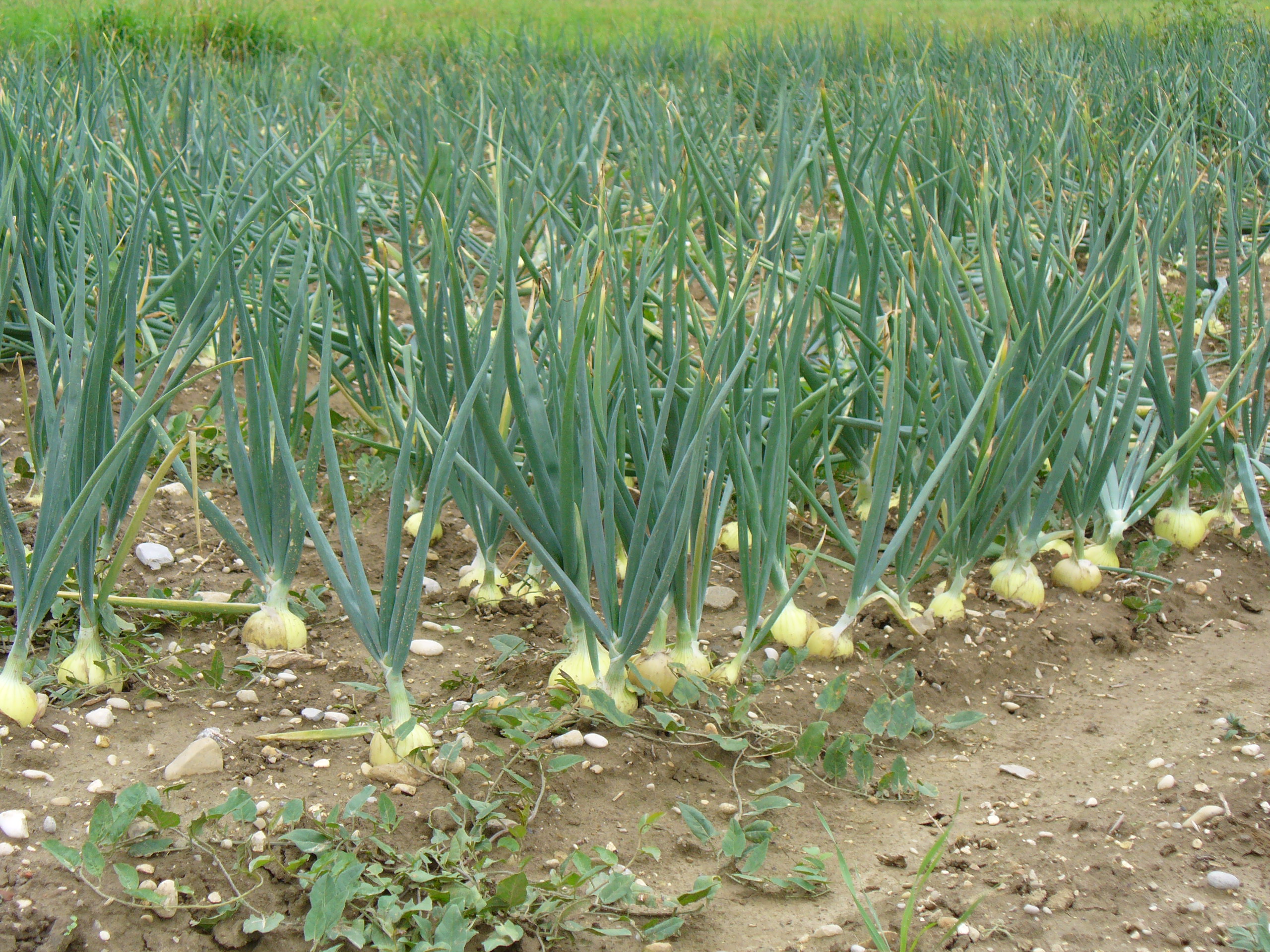Onions are best cultivated in fertile soils that are well-drained. Sandy loams are good as they are low in sulphur, while clayey soils usually have a high sulphur content and produce pungent bulbs. Onions require a high level of nutrients in the soil. Phosphorus is often present in sufficient quantities but may be applied before planting because of its low level of availability in cold soils. Nitrogen and potash can be applied at intervals during the growing season, the last application of nitrogen being at least four weeks before harvesting. Bulbing onions are day-length sensitive; their bulbs begin growing only after the number of daylight hours has surpassed some minimal quantity. Most traditional European onions are what is referred to as "long-day" onions, producing bulbs only after 14+ hours of daylight occurs.
Southern European and North African varieties are often known as "intermediate-day" types, requiring only 12–13 hours of daylight to stimulate bulb formation. Finally, "short-day" onions, which have been developed in more recent times, are planted in mild-winter areas in the fall and form bulbs in the early spring, and require only 11–12 hours of daylight to stimulate bulb formation.Onions are a cool-weather crop and can be grown in USDA zones 3 to 9.Hot temperatures or other stressful conditions cause them to "bolt", meaning that a flower stem begins to grow.

No comments:
Post a Comment